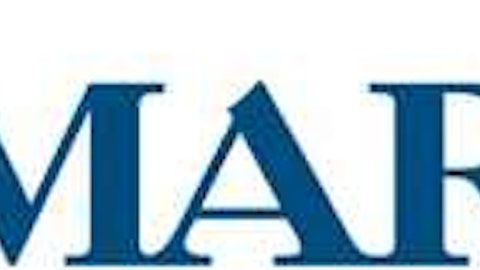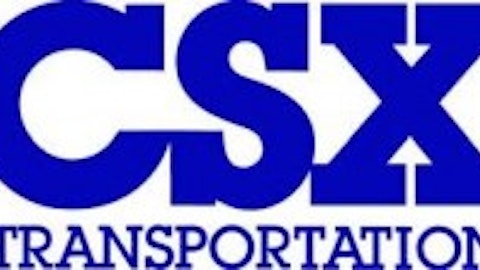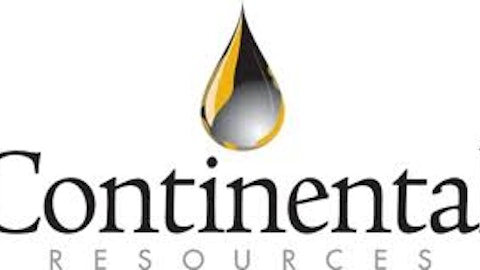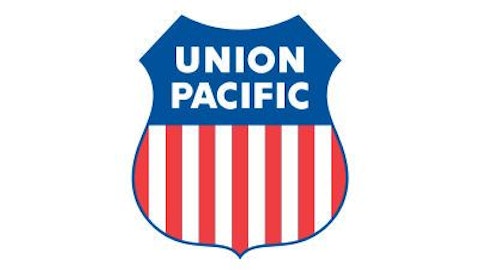Union Pacific Corporation (NYSE:UNP) is the largest major railroad company with a market capitalization of $72 billion. The company has a huge rail network operating west of the Mississippi to the Pacific Ocean. As a result, Union Pacific Corporation (NYSE:UNP) is less exposed to the liabilities of declining coal consumption, although they still represent 17% of revenues. The company has demonstrated very impressive EPS growth, with 19.1% annualized earnings growth over the past 5-year period. Much of this has been the result of expanding margins and share repurchases as revenue growth has averaged 5.15%.
In the most recent quarterly report oil shipments are included in the chemicals subdivision and revenue for this segment has expanded dramatically from $768 million in 2012 to a projected $873 million by the end of 2013, a 13% increase accounting for most of the company’s projected revenue growth, which is expected to grow from $5.11 billion in 2012 to $5.29 billion in 2013. However, at a nearly 20% premium to its average price to earnings multiple it seems advised to wait for the time being.

Trinity Industries Inc (NYSE:TRN) is headquartered in Texas and manufactures railcars, barges other industrial products. By far the company’s largest segment is rail, with 40% of revenues coming from production, a rapid increase from 36% in 2011. Railcar leasing and management services account for an additional 17% of revenues making Trinity Industries Inc (NYSE:TRN) highly levered to increasing demand for rail transportation. Capitalizing on the American energy revolution is a key component of Trinity Industries Inc (NYSE:TRN)’s corporate strategy.
The rail group segment has grown immensely for Trinity comprising revenues of $522 million in 2010, $1275 million in 2011 and $2013 million in 2012. Margins have expanded dramatically with Trinity only profiting by $1.5 million in 2011 due to rail, expanding to $77 million in 2012 and $199 million in 2013. It is safe to say that growing demand for rail cars is driving the entirety of Trinity’s top and bottom-line growth. Margin and revenue growth have slowed after Trinity rebounded from the 2008 recession, however, if the rate of growth slows at a constant rate it seems reasonable to expect approximately $4 per share in earnings for the 2013 fiscal year.


Trinity is a cyclical high-beta stock and is not free from risk, particularly if the economy slips back into recession. However, the company is also a compelling value and is uniquely situated to capitalize on the trend toward greater crude oil production in North America. If the economy continues to rebound and Trinity executes well it seems reasonable to expect the earnings multiple to expand from 11 to 15, which remains below the historical average of over 17 since 1994. This would yield a 12-month price target of $60 per share, 57% above the current price.
The increasing production of crude oil in North America is a highly significant trend that should benefit the businesses presented above.Union Pacific Corporation (NYSE:UNP) may be the most desirable railroad, but at the present time Trinity has the most desirable valuation and should continue to outperform the market so long as the economy continues to improve.
The article All Aboard the Oil Train: Which Company is Best Positioned to Capitalize on Surging U.S. Oil Production? originally appeared on Fool.com.
Brendan O’Boyle has no position in any stocks mentioned. The Motley Fool has no position in any of the stocks mentioned. Brendan is a member of The Motley Fool Blog Network — entries represent the personal opinion of the blogger and are not formally edited.
Copyright © 1995 – 2013 The Motley Fool, LLC. All rights reserved. The Motley Fool has a disclosure policy.




